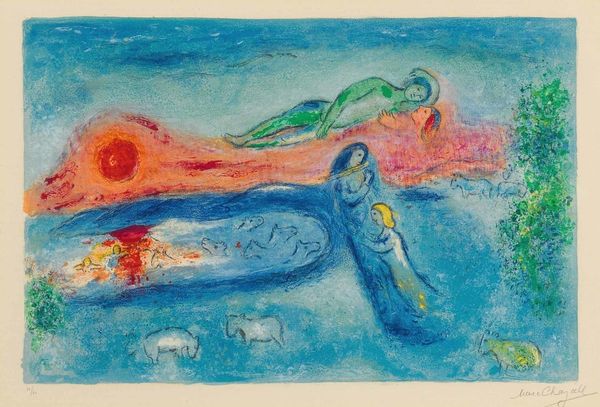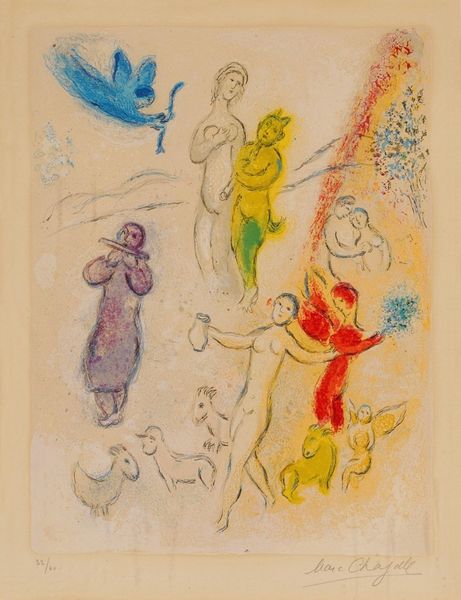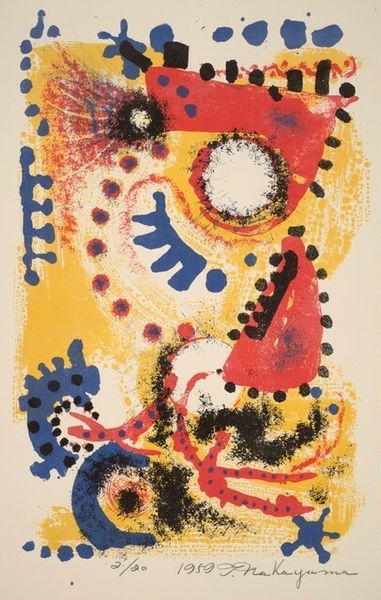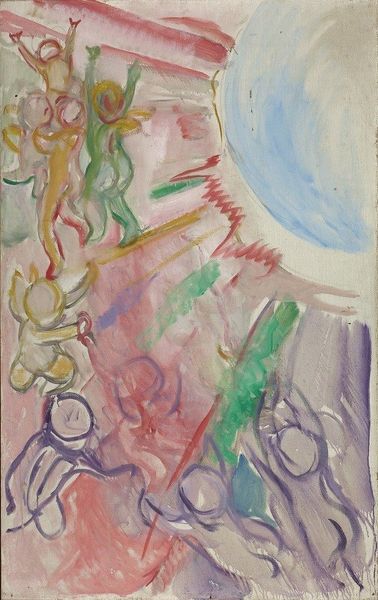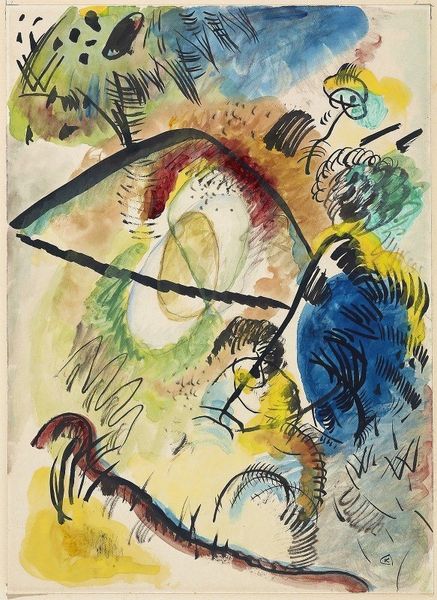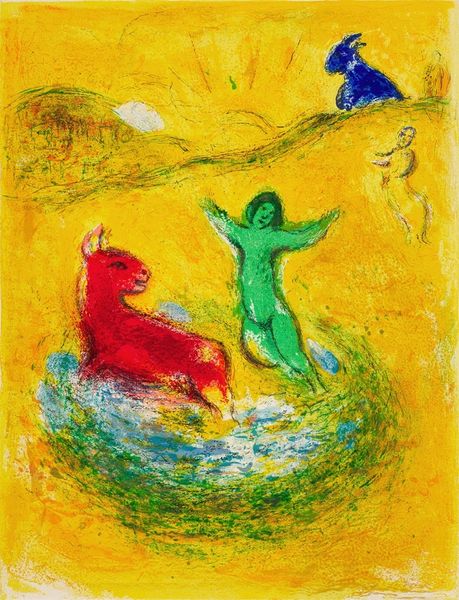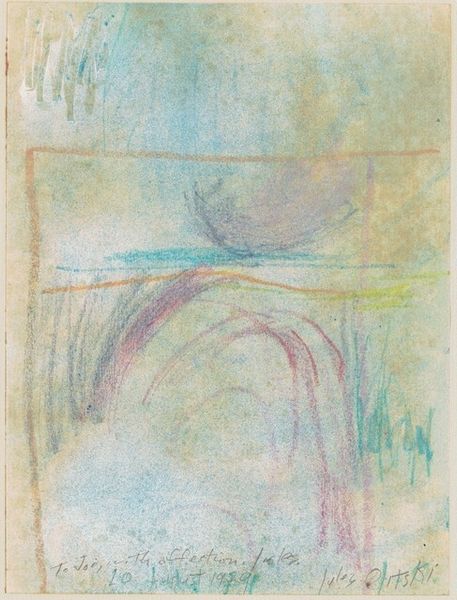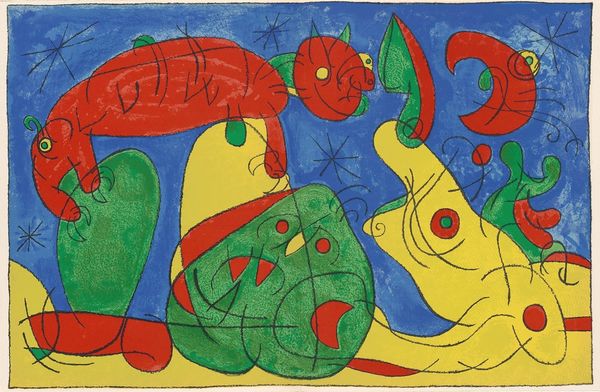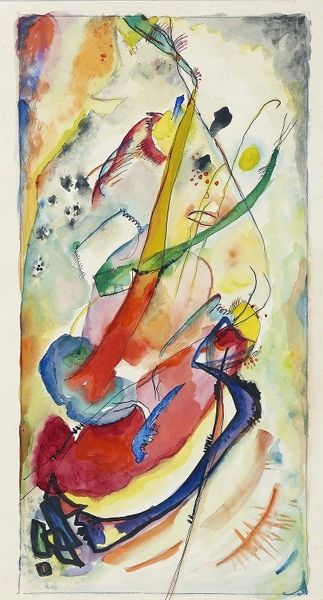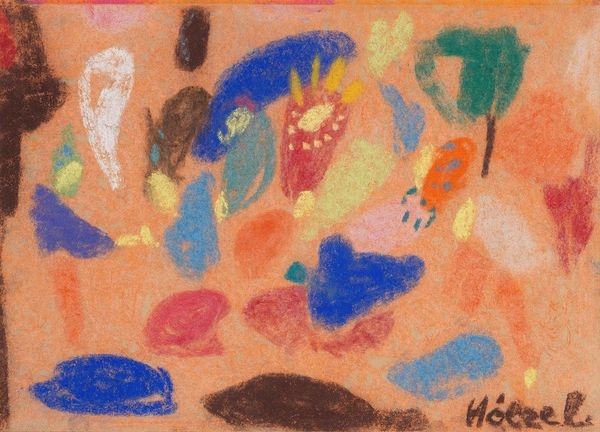
Copyright: Modern Artists: Artvee
Editor: So, this is Marc Chagall's "The Trampled Flowers" from 1961, made with watercolors. It has such a wistful quality; the colors feel both bright and muted at the same time. What do you see when you look at this piece? Curator: Ah, yes. The enduring visual vocabulary of Chagall. Notice how the figures seem to float, unbound by gravity, amidst those delicate, trampled blossoms. Think about the emotional weight of flowers across cultures - love, remembrance, loss. Why do you think Chagall might juxtapose such potent symbols? Editor: Maybe he's playing with the contrast between human emotion and the natural world? There's a figure reaching up, and another kneeling down as if mourning. Is there a cultural memory connected with this composition? Curator: Precisely. Consider the persistent image of the 'lamentation' scene throughout art history - a visual shorthand for profound sorrow and empathy. Here, the trampled flowers become metonyms for fragility, loss, perhaps even broken promises. What narratives spring to mind? Editor: I’m getting a sense of some past trauma. The person reaching upward has this expression of near desperation, as though they are reaching for something, perhaps for the before, a recovery. Curator: A keen observation. The figure's posture could reflect the helplessness experienced in times of war, displacement, or social unrest. It's the cultural residue in those forms and hues, etched into our collective consciousness. The temple behind is so pale and seems to watch indifferently, an emotional contrast of a symbol that has a history of once offering safe sanctuary. Editor: It’s amazing how a seemingly simple image can hold so much historical and emotional resonance. Curator: Indeed. Chagall distills complex emotions into readily-accessible visual motifs, a testament to the lasting power of symbols to traverse time and culture. This piece stays with you after viewing. Editor: Absolutely. Thank you for offering a peek behind the curtains of symbolism here.
Comments
No comments
Be the first to comment and join the conversation on the ultimate creative platform.
